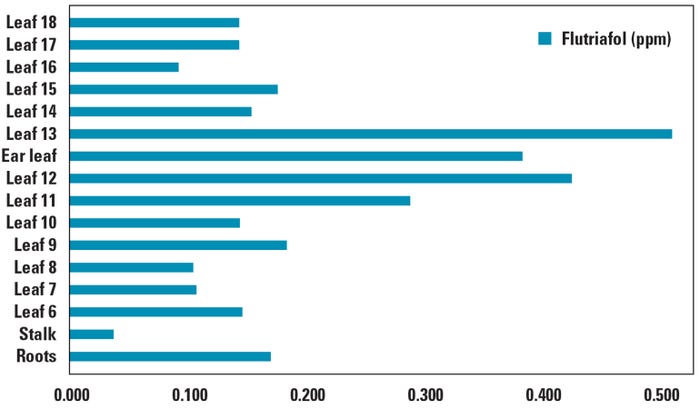
A new product launched commercially in 2021 to control fungal diseases in corn could cause growers to rethink disease control strategies. It isn’t often that a new product comes along that could cause a paradigm shift in management practices.
The product is Xyway from FMC. Drake Copeland, FMC technical services manager, says what’s different is that this fungicide is applied at planting. Yet it still has activity against diseases that often appear closer to tasseling and silking in corn.
Xyway can be applied as a foam using FMC’s 3RIVE 3D application system, as a liquid in-furrow or even in 2-by-2-inch placement. Xyway 3D is applied as a foam in-furrow using FMC’s patented technology. Typically, there are incentive programs to help pay for the cost of this equipment. Xyway LFR can be applied in-furrow or 2-by-2 with existing equipment.
Nuts and bolts
The irony is that the active ingredient, flutriafol, is not new. Martin Chilvers, a field crop plant pathologist with Michigan State University, says flutriafol has been around for a long time. It’s in the triazole family, which are FRAC Class 3 fungicides, also called DMI fungicides. What sets flutriafol apart, however, is that it is much more mobile than other active ingredients in its class. It’s taken up by roots and transported through the plant.
Scientists at FMC took notice when they discovered it was used to control root diseases in cotton in Texas and foliar diseases in vineyards in California. “If it could work systemically there, could it work in corn?” Copeland says. “That’s when we started looking at it seriously as an at-planting fungicide for corn.”
The answer appears to be yes, it can be applied at planting to control many fungal diseases through the season. FMC reports that based on 2019 trials conducted in the Midsouth, Xyway brand fungicides applied at planting averaged 13 bushels per acre over the untreated check, compared to a 15-bushel advantage over the check for an industry-standard fungicide applied at R1. Copeland notes that the return on investment for Xyway should be the same or better if you include the R1 application cost.
Chilvers made a surprising discovery when he analyzed concentration of the active ingredient, flutriafol, in each leaf of corn plants at R3. He found it in every leaf, with the highest concentration near the middle of the plant.

“We were amazed to see those levels, and we can’t yet explain why there is more around the middle leaves,” Chilvers says. “There is lots of potential here, and we are working with other universities to learn more about this active ingredient applied at planting.”
If you applied Xyway at planting and it’s an intense year for disease, would an R1 application still help? That would likely be the ideal strategy from a disease control standpoint, Copeland says. Whether it would provide the best ROI is unknown at this point.
About the Author(s)
You May Also Like




